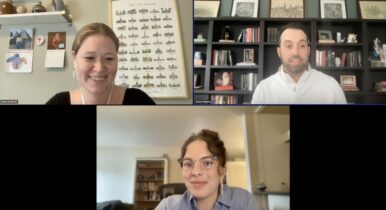You finally had it all figured out. Your target audience was responding to your campaign’s messaging. Supporter engagement metrics were consistent, and you’d been collecting a predictable number of grassroots contributions every month. Then, well, something changed.
All of a sudden, your messaging isn’t resonating, and your emails, mobile messages, and social media posts seem to be falling flat. Your strategy hasn’t changed — it’s just no longer getting the results you’d come to depend on. You’re starting to worry about hitting your goals and paying the bills.
It can be incredibly disheartening to see drops in engagement. Before you panic, here are five steps you can take to reengage your supporters.
1. Check your tech.
If your stats truly plummeted, it’s worth first looking into whether your systems and infrastructure are functioning as they should be. If your contributions are down, you should probably check all your fundraising links. If your emails consistently aren’t getting the response they were a month earlier, you might have an email deliverability problem on your hands. Tech problems range from easily fixed typos to massive system-wide catastrophes. In any case, if your technology is broken, you’re not going to get the results you need.
2. Take a beat.
Sometimes, massive shifts in your audience’s interest have nothing to do with your campaign or its message — it could be that more pressing news is on people’s minds. If you were trying to fundraise in March 2020, for example, your audience was likely to tune out your pleas unless you were one of the few people or organizations able to raise money with integrity in the earliest days of the pandemic hitting the United States.
If this is one of those times when an outside factor is in place, turn off your prescheduled content and consider how you can do the most good with the tools and infrastructure you have in place. Does it make sense to use your systems to raise awareness and encourage donations to another organization? Do you have the ability to connect people who need to be connected right now? What can you do that will support your community the most right now?
3. Get back to basics.
What was the most successful email or message you sent in the last year? When your engagement is down and you’re no longer sure what kind of content to send, start by revisiting your old standbys. Remember, your email audience doesn’t read every email you send — each subscriber reads the emails that catch their eye or that show up in their inbox at the right time. That means it’s safe to recycle content every so often.
By updating and resending content that worked extremely well in the past, you can gain insight into whether your supporters are still interested in the same general topics and tactics, or if there are more substantive shifts happening within your constituency and among your supporters.
4. Check in with your audience.
It might be time to learn more about your audience. If you haven’t done so in a while, try running a (formal or informal) focus group, sending a survey, or gathering information from a town hall. Gain more insight into what your community is thinking about and how the people you’re trying to connect with want to receive information. Take a look at recent polling and consider whether the way you talk about certain topics needs to evolve. If you want to lead, you also need to listen.
5. Get a fresh set of eyes on your program.
Every day my team and I talk to leaders and communicators who are stuck in a rut. When you’re incredibly busy, sometimes you don’t have time to do a deep dive into your digital program. Find someone who doesn’t spend all day every day looking at your content and get their feedback. It often takes a fresh pair of eyes to see where the tone or tactic just isn’t quite right. And if you determine you need to hire professional help, it’ll pay off exponentially if you do it early, rather than in the final weeks before an election.
Alesa Mackool is the founder and president of ACM Strategies, a team of digital organizers and strategists that specializes in helping progressive leaders and organizations win uphill battles. A version of the post originally appeared on ACM Strategies’ blog.


